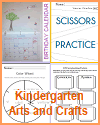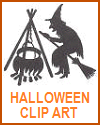Curved Downward Arrow Sign |
 |
 |
|---|
| Hollow downward arrow printable sign for classroom bulletin boards, etc. Click here to print. |
|
Displaying clear signage indicating the locations of learning centers in a classroom is important for several reasons.
Promotes Independence: Clear signage empowers students to navigate the classroom independently. When learning centers are well-labeled, students can find the materials and resources they need for various activities without constant teacher guidance. This fosters self-sufficiency and a sense of responsibility for their learning. Supports Differentiated Instruction: Learning centers often cater to different learning styles and abilities. Clearly labeled centers help teachers and students identify the available options and choose activities that align with their individual needs and interests. This supports differentiated instruction, allowing students to learn at their own pace and in their preferred way. Encourages Exploration: Visible signage can pique students' curiosity and encourage them to explore different learning centers. When centers are labeled with enticing titles or visuals, students may be more motivated to engage in hands-on activities, investigate new topics, or explore diverse learning opportunities within the classroom. Organizes Classroom Space: Signage contributes to the overall organization of the classroom. It delineates specific areas for learning activities, making it easier for students to understand the spatial arrangement of the classroom and maintain order. This organization minimizes distractions and maximizes instructional time. Facilitates Classroom Management: Clear signage can assist with classroom management by helping students know where to go and what to do during transitions or independent work periods. This reduces confusion and disruptions, allowing teachers to focus on instruction and support. Enhances Communication: Signage serves as a form of communication between teachers and students. It conveys information about the purpose and expectations of each learning center. Teachers can use signage to provide instructions, learning objectives, or guidelines for activities, ensuring that students understand their tasks. Promotes Inclusivity: In classrooms with diverse student populations, signage can be particularly valuable. Visual cues and clear labels are beneficial for students who may have language barriers or special needs, making it easier for them to engage with learning centers and participate in classroom activities. Supports Classroom Routines: When learning centers are consistently labeled and organized, they become an integral part of the classroom routine. Students become familiar with the layout and expectations, leading to smoother transitions between activities and greater overall efficiency. Encourages Responsibility: By clearly indicating the location of learning centers and the materials within them, signage reinforces the expectation that students are responsible for maintaining the organization and cleanliness of the classroom. It encourages students to return materials to their designated places after use. Fosters Ownership of Learning: When students can independently access learning centers and materials, they feel a sense of ownership over their learning. They become active participants in selecting and engaging with educational resources, which can enhance their engagement and motivation. In short, clear signage in the classroom is a practical and effective tool for creating an organized, student-centered learning environment. It empowers students to take charge of their learning, promotes efficient classroom management, and supports differentiated instruction, ultimately contributing to a positive and productive educational experience. |









